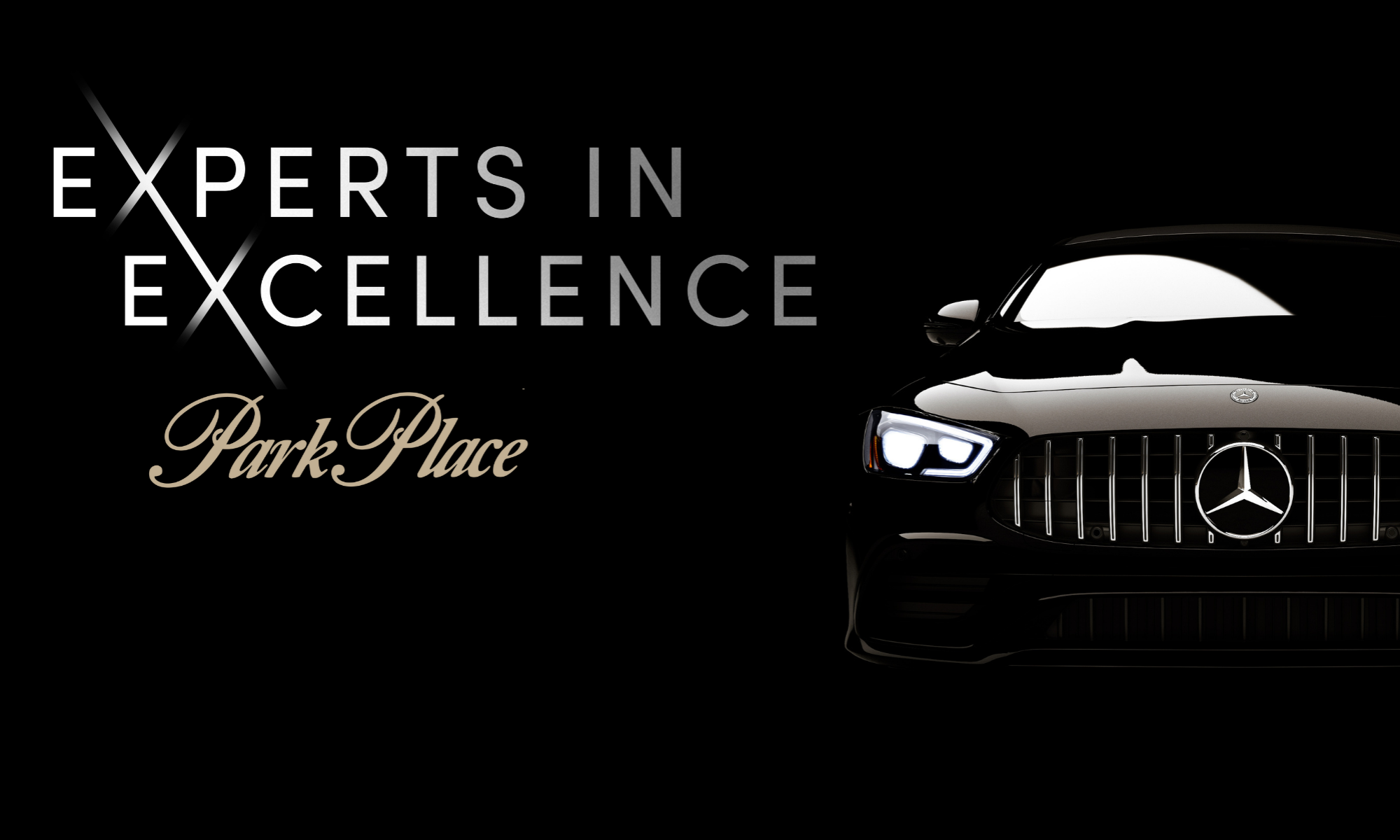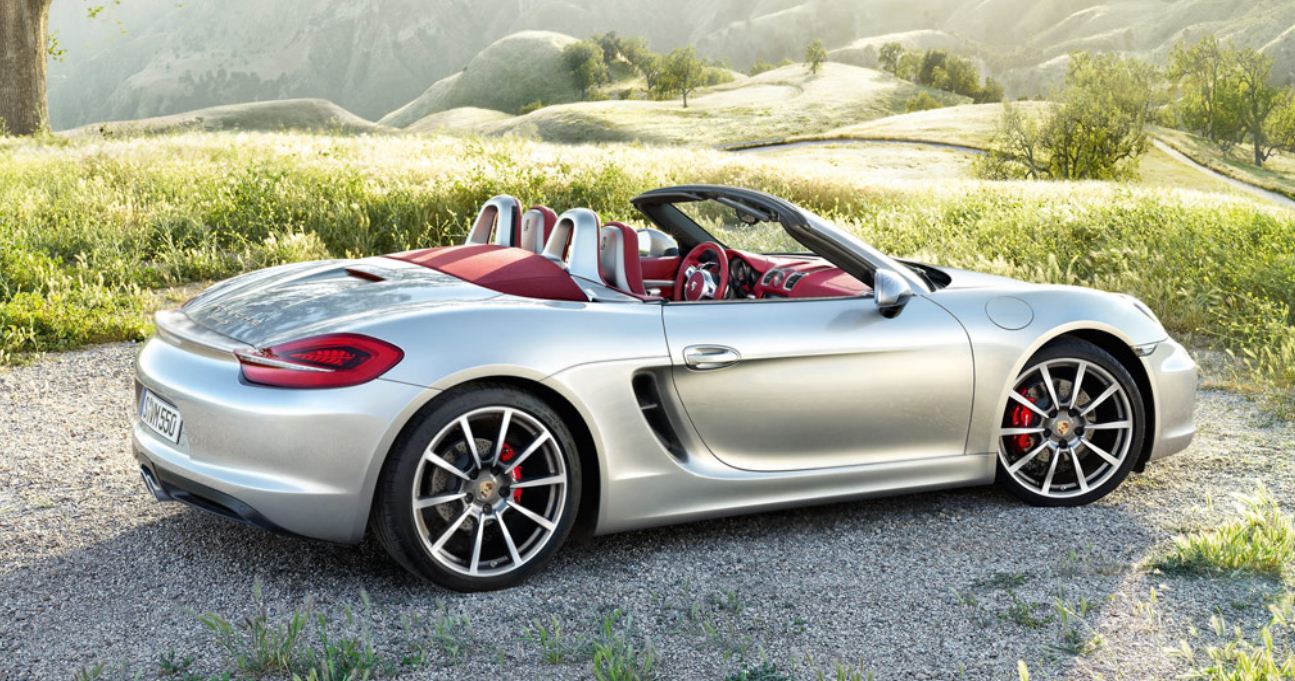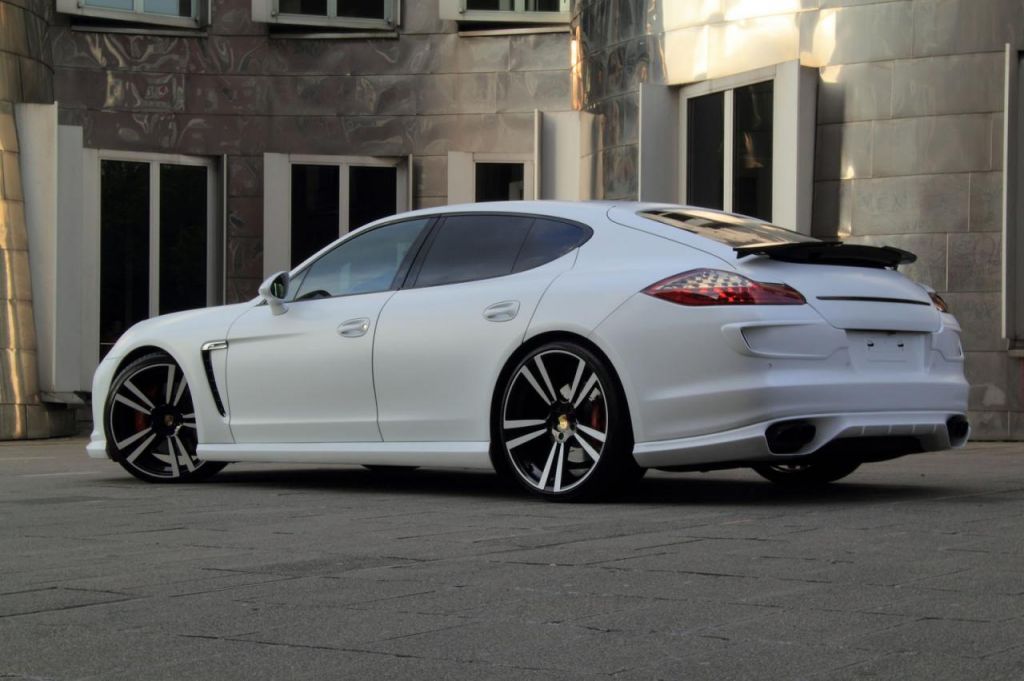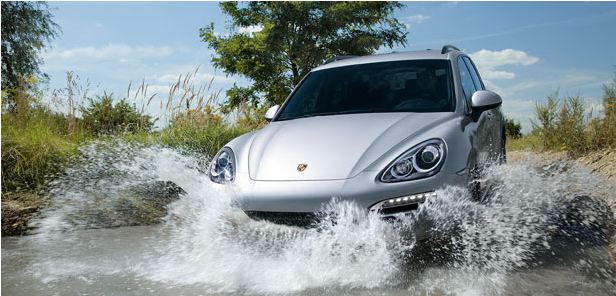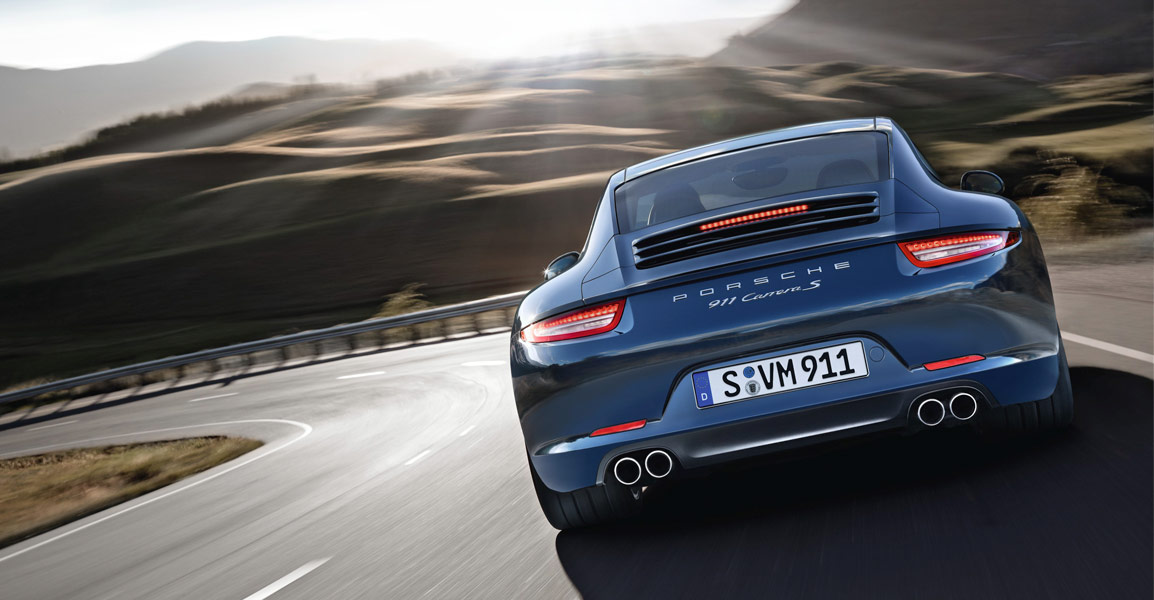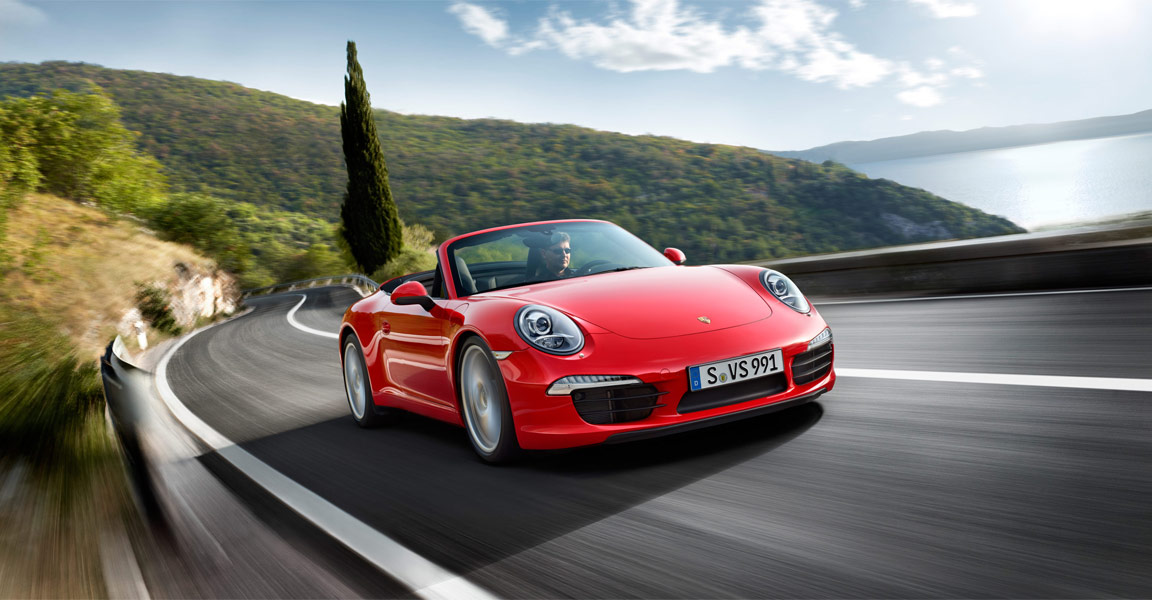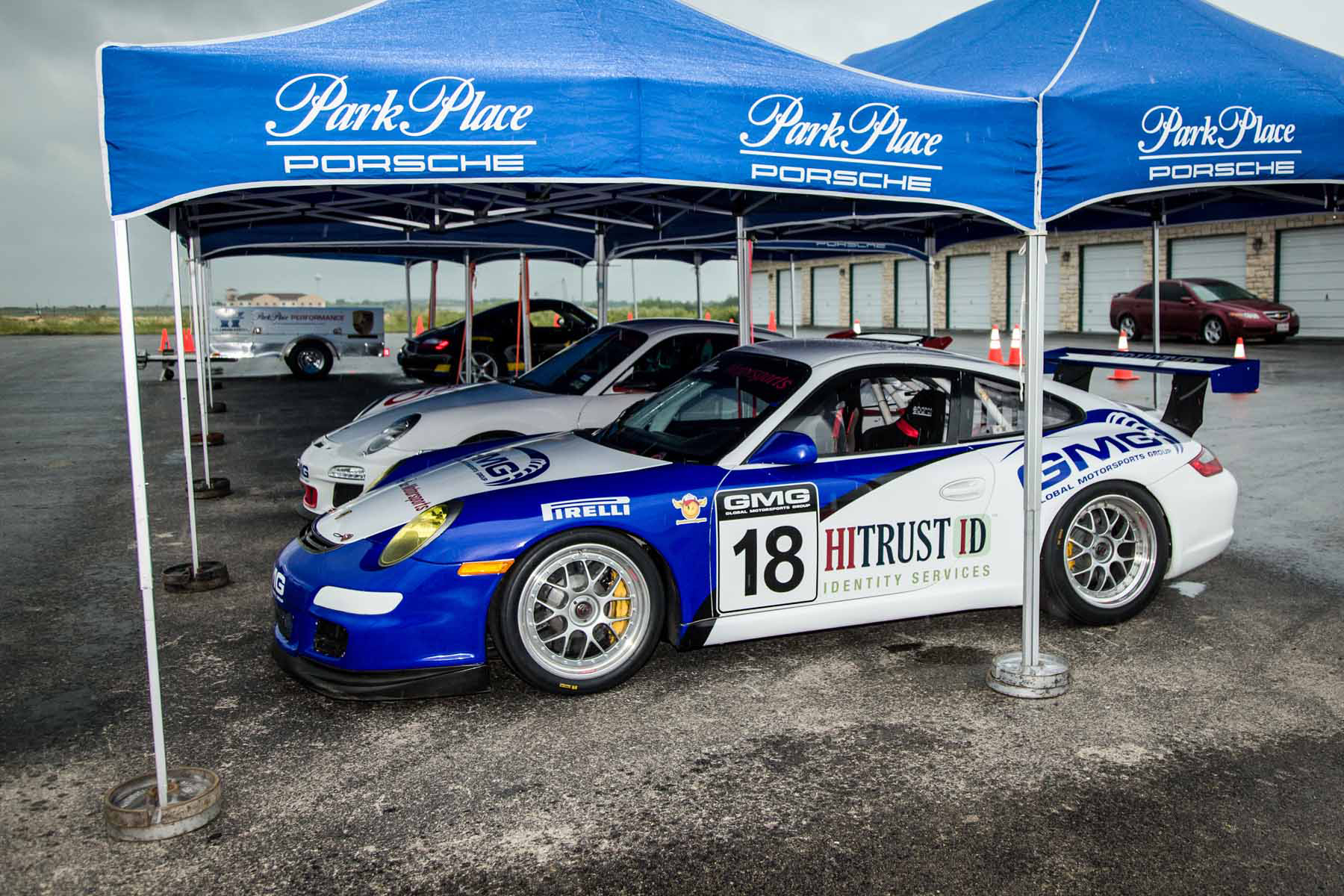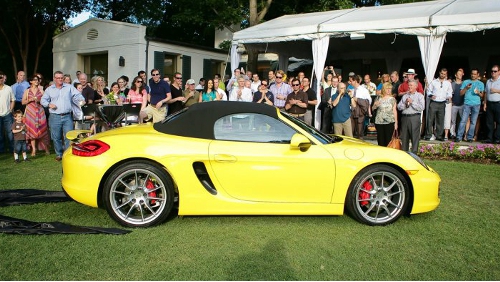2013 Porsche Cayenne crossover SUVs comprise everything you demand in a Porsche: brilliant performance, acceleration, braking and steering – in a rugged body that fancies every terrain and every element.
Overview
When the four-door all-wheel-drive Porsche Cayenne first hit the scene, many questioned the move. After all, people associate Porsche as sports cars with unparalleled performance and engineering that could take on any racetrack. They certainly don’t picture Porsche cars on steep hills and unpaved terrain. It didn’t take long before skeptics became believers when they saw hallmark Porsche features of steering, acceleration, braking, and efficiency realized in a high-performance SUV. The Cayenne came out triumphant.
Instead of four, Porsche now offers six variants of 2013 Porsche Cayenne crossovers. “Each Cayenne has its own personality, so choosing one is like trying to pick the right ice cream at Baskin-Robbins, except you don’t get a tiny plastic spoon,” writes Car and Driver in its review. New flavors include the 2013 Porsche Cayenne Diesel, the fuel sipper, and the Cayenne GTS, the performance-oriented powerful younger sibling of the Turbo minus the turbochargers.
With such a diversity of options, how do you pick? Go ahead and learn about each one knowing that you’ll be more than pleased with your final selection. Edmunds.com writes, “Even on these less performance-oriented Cayennes, highway handling is impressive and the steering deserves special praise for its linearity and precision.” Now let’s meet each one.
Meet the 2013 Porsche Cayenne models
2013 Porsche Cayenne. The new Cayenne features a naturally aspirated 3.6-liter V6 engine with direct fuel injection (DFI) and variable valve timing on inlet and exhaust. The engine generates 300 hp at 6,300 rpm with a maximum torque of 295 lb.-ft. at 3,000 rpm. It just takes 7.1 seconds to reach 60 mph with a manual gearbox and its top track speed is 142 mph. Those are sedan numbers in a big car.

2013 Porsche Cayenne S. The Cayenne S has a naturally aspirated 4.8-liter V8 engine with direct fuel injection (DFI), VarioCam Plus and a two-stage intake manifold. The engine generates 400 hp at 6,500 rpm with a maximum torque of 369 lb.-ft. between 3,500 and 5,000 rpm. Fitted with eight-speed Tiptronic S as standard, the car takes 5.6 seconds to reach 60 mph and its top track speed is 160 mph. Not kidding.
2013 Porsche Cayenne S Hybrid: First, Porsche built and introduced an SUV proving many skeptics wrong. Now it makes another surprising move with the 2013 Porsche Cayenne S Hybrid. This may sound like a game of chess. If you consider the road as the king, the hybrid SUV conquers it every time. “The hybrid version is meant to be clean and green without being boring or underpowered, and Porsche has done a wonderful job mating a real engine, a real transmission (instead of a CVT), and a clever hybrid package of battery, motor, charging system and electronic controls,” writes Aol Autos.
The Cayenne S Hybrid pairs a 3.0-liter V6 supercharged gasoline engine with an electrical motor powered by a 288-volt nickel metal-hydride (NiMh) battery pack turning the hybrid SUV into a fuel-efficient sporty performer. This sounds like a contradiction, yet the hybrid generates a total of 380 hp and maximum torque of 428 lb.-ft. through its 8-speed Tiptronic S transmission and permanent all-wheel drive system. This system thrusts the hybrid SUV from 0 to 60 mph in just 6.1 seconds working up to a top track speed of 150 mph. (That’s not a typo.)

2013 Porsche Cayenne GTS. Powering the new sport-tuned Cayenne GTS is a naturally aspirated 4.8-liter V8 Cayenne engine with direct fuel injection (DFI) and VarioCam Plus. It generates 420 hp at 6,500 rpm with a maximum torque of 380 lb.-ft. at 3,500 rpm. It smashes from 0 to 60 mph in 5.4 seconds and reaches a top speed of 162 mph. Are you blown away yet?
The GTS comes with many features that are optional on other trims including a lower chassis for improved handling, Porsche’s active suspension system (PASM), 20-inch wheels, adaptive bi-xenon headlights, the Turbo’s front fascia, upgraded brakes with red brake calipers, front and rear GTS sport seats, a sport steering wheel, and more.

2013 Porsche Cayenne Diesel. Powering the new Cayenne Diesel is a 3.0-liter V6 turbo-diesel engine with a common-rail injection system. Its turbocharger features Variable Turbine Geometry (VTG). This means the incoming exhaust gases drive a set of electronically variable turbine blades with its angle continuously adjusted to ensure optimum performance under all engine loads.
The Porsche Cayenne Diesel generates an output of 240 hp with a maximum torque of 406 lb.-ft. between 1,750 and 2,750 rpm. It just takes 7.2 seconds to reach 60 mph and its top track speed is 136 mph. The impressive EPA-estimated fuel economy is 19/29/23. This is the choice for those are more fuel-conscious than performance-oriented.

2013 Porsche Cayenne Turbo. Powering the Cayenne Turbo is powered is a 4.8-liter twin-turbo V8 engine featuring direct fuel injection (DFI), VarioCam Plus and charge-air cooling. It generates 500 hp at 6,000 rpm with a maximum torque of 516 lb.-ft. between 2,250 and 4,500 rpm. Its name is no surprise with its ability to jet from 0 to 60 in 4.2 seconds and its top track speed is 172 mph. Yes, we double-checked those numbers.

Edmunds.com reports that the 2013 Porsche Cayenne crossover has a year-long waiting list in China. Fortunately, that won’t be a problem when you work with the staff at Park Place Porsche Dallas to explore the functional, spacious and luxurious crossover SUV that wholly reflects the Porsche brand. No tiny pink spoons needed. Just bring your driving self and our team will help you sample the Cayenne until you find your favorite.
Interior
Interior features vary based on model and package. This is a sample of some of the interior features you’ll find in the 2013 Porsche Cayenne.
 2013 Porsche Cayenne interior colors:
2013 Porsche Cayenne interior colors: Colors vary based on model. These are some of the colors available. Black, Platinum Grey, Luxor Beige, Umber.
Audio system. The CDR audio system has a 7-inch color touchscreen display to help you navigate the main menus and functions with ease. The integrated CD radio, featuring an FM twin-tuner with RDS, 30 memory presets, dynamic autostore and speed-sensitive volume control, includes a sound system with 10 loudspeakers and a total output of 100 watts. Audiophiles can combine the CDR with the BOSE Surround Sound System or Burmester High-End Surround Sound System.
Seating. The seats in the Cayenne models are practical, comfortable and sporty, just like the rest of the interior. All seats come with two-way head restraints and storage pockets on the front seat backrests. The seats feature 8-way electric adjustment including fore/aft, height, squab length and squab/backrest angle settings. Standard on the Cayenne, Cayenne Diesel and Cayenne S.
GTS seating. The 2013 Cayenne GTS sports seats come with 8-way adjustment. It also stores steering wheel and exterior mirror preferences for the driver and seat settings including lumbar supports for both driver and front passenger. Standard on the Cayenne GTS.
Luggage compartment. Cayenne models have a spacious passenger area and a large versatile luggage compartment because of the adjustable rear bench. With a total volume of 23.7 cu ft., the Cayenne has more than enough space for up to six suitcases – depending on the size. Other standard features include an easily accessible meshed storage compartment on the left and a practical load-through facility when the center section of the rear bench is folded down.
With the rear seats folded, you get up to 62.9 cu ft. of space. Protect and hide items with the retractable cover with detachable storage cassette.
Exterior
Exterior features vary based on model and package. This is a sample of some of the exterior features you’ll find in the new Porsche Cayenne.
 2013 Porsche Cayenne exterior colors
2013 Porsche Cayenne exterior colors: Colors vary based on model. These are some of the colors available. Black, White, Jet Black Metallic, Auburn Metallic, Classic Silver Metallic, Umber Metallic, Jet Green Metallic, Meteor Grey Metallic, Dark Blue Metallic. Metallic colors optional. Special optional colors for 2013 Porsche Cayenne GTS: Peridot Metallic, Carmine Red.
Automatic headlight activation. This is a standard feature in all Cayenne models. The headlights are automatically switched on when darkness sets in or when driving through a tunnel during the day. Other features include an automatic switch-off and “Welcome Home” function, where the headlights stay on for a defined length of time to light your path from the SUV to the door.
Halogen main headlights. Standard in the Cayenne, Cayenne Diesel, Cayenne S and Cayenne S Hybrid, the projector-beam halogen main headlights feature automatic static range control and reflection high-beam lights for optimum road illumination.
Bi-Xenon main headlights. Standard in the Cayenne GTS and Cayenne Turbo. These headlights feature halogen auxiliary headlights, integrated headlight cleaning and automatic dynamic range control. This provides uniform lighting on the road in both low and high-beam mode. Cayenne GTS headlights have a black surround.
Daytime running lights. On the Cayenne, Cayenne Diesel, Cayenne S and Cayenne S Hybrid, these are arranged horizontally in the front light units, whereas on the new Cayenne GTS and the Cayenne Turbo every main headlight unit has four LED spotlights. Daytime running lights improve safety in the daytime by making your crossover more visible to other road users.
Wheels. The 18-inch Cayenne wheel is standard in the Cayenne. The 18-inch Cayenne S III wheel is standard on the Cayenne S.
Safety
Safety features vary based on model and package. This is a sample of some of the safety features you’ll find in the 2013 Porsche Cayenne.
 Porsche stability management (PSM).
Porsche stability management (PSM). Standard in all Cayenne models, Porsche Stability Management (PSM) maintains stability even at the limits of dynamic driving performance. Sensors continuously monitor the direction, speed, yaw velocity and lateral acceleration of the car.
Braking system. Equipped with larger and more powerful braking systems, Cayenne models continue have excellent deceleration – even when there are five adults in the car, a trunk full of things and a braked trailer load of up to 7,716 pounds (Cayenne with manual gearbox: 5,952 pounds).
All Cayenne models have internally vented discs all round, ensuring consistent performance during heavy use. The SUVs also have six-piston monobloc aluminum brake calipers at the front and four-piston equivalents at the rear.
Electric parking brake. As you pull away, the new electronic parking brake automatically releases. You can manually activate and deactivate this safety feature.
Airbags. All Cayenne models come with full-size front airbags for driver and front passenger as standard. These are augmented by Porsche Side Impact Protection (POSIP). This consists of a side airbag in each front seat, curtain-type airbags on each side of the roof for head protection for both rows of seats and side impact protection in each door.
Performance
All Cayenne gas engines use direct fuel injection (DFI) to increase power and torque, improve fuel economy by 20 percent over its predecessor and lower emissions
Porsche Traction Management (PTM). Combines active all-wheel drive with an electronically variable multi-plate clutch, automatic brake differential (ABD) and anti-slip regulation (ASR). These ensure the perfect distribution of drive torque for optimum traction in all road scenarios.
Eight-speed Tiptronic S is standard in the Cayenne S, Cayenne Diesel, Cayenne GTS and Cayenne Turbo. This feature instills a wide ratio spread with first gear designed for optimum acceleration when pulling away and greater performance for driving uphill and towing loads in off-road terrain.

2013 Porsche Cayenne Vital Stats
Engine: naturally aspirated 3.6-liter V6 engine
Max power: 300 hp @ 6,300 rpm
0-60 mph time: 7.4 seconds
Top track speed: 142 mph
Max torque: 295 lb-ft
Fuel consumption: 22 mpg highway; 15 mpg city
2013 Porsche Cayenne S Vital Stats
Engine: naturally aspirated 4.8-liter V8 engine
Max power: 400 hp @ 6,500 rpm
0-60 mph time: 5.6 seconds
Top track speed: 160 mph
Max torque: 369 lb-ft
Fuel consumption: 22 mpg highway; 16 mpg city
2013 Porsche Cayenne S Hybrid Vital Stats
Engine: 3.0-liter V6 supercharged engine
Max power: 380 hp total @ 5,500 rpm
0-60 mph time: 6.1 seconds
Top track speed: 150 mph
Max torque: 428 lb-ft
Fuel consumption: 24 mpg highway; 20 mpg city (Manual)
2013 Porsche Cayenne GTS Vital Stats
Engine: naturally aspirated 4.8-liter V8 Cayenne engine featuring VarioCam Plus
Max power: 420 hp @ 6,500 rpm
0-60 mph time: 5.4 seconds
Top track speed: 162 mph
Max torque: 380 lb-ft
Fuel consumption: 21 mpg highway; 15 mpg city (Manual)
2013 Porsche Cayenne Diesel Vital Stats
Engine: 3.0-liter V6 turbo-diesel engine with a common-rail injection system.
Max power: 240 hp @ 3,500 – 4,000 rpm
0-60 mph time: 7.2 seconds
Top track speed: 135 mph
Max torque: 406 lb-ft
Fuel consumption: 29 mpg highway; 20 mpg city (Manual)
2013 Porsche Cayenne Turbo Vital Stats
Engine: 4.8-liter twin-turbo V8 engine featuring VarioCam Plus and charge-air cooling
Max power: 500 hp @ 6,000 rpm
0-60 mph time: 4.4 seconds
Top track speed: 172 mph
Max torque: 516 lb-ft
Fuel consumption: 22 mpg highway; 15 mpg city (Manual)
The new Cayenne S Hybrid can also operate in electric-only mode at speeds of up to 40 mph. The SUV gets 333 hp and gains an additional 47 hp from two electric motors with the AWD system and self-locking center differential. This allows you to get the kind of acceleration you’d expect from a V-8, but with a mileage of a V-6.
Featuring Auto Start/Stop technology, the Cayenne S Hybrid automatically turns off the engine when the SUV stops at traffic lights and the driver’s foot is on the brake. Although the engine isn’t running, audio and communication systems stay on and the standard climate control continues with the selected temperature. You won’t notice any changes other than a quieter car.
Porsche Traction Management (PTM) provides a standard torque split of 60 percent to the rear and 40 percent to the front. If one of the wheels is about to lose grip, the self-locking center differential transmits the torque to the axle offering the highest level of traction. The PTM also distributes torque to the rear wheels to boost steering precision and driving dynamics.

